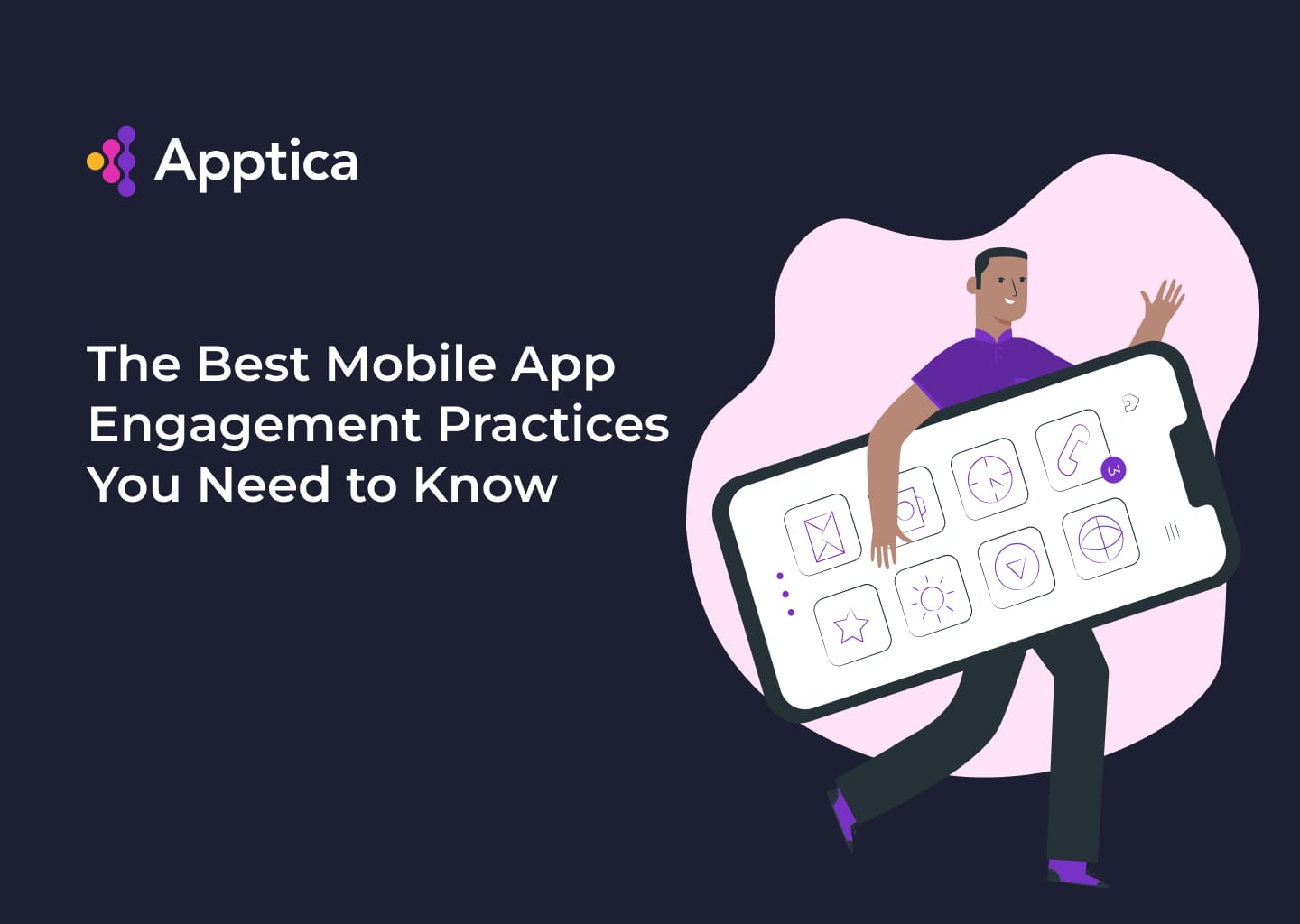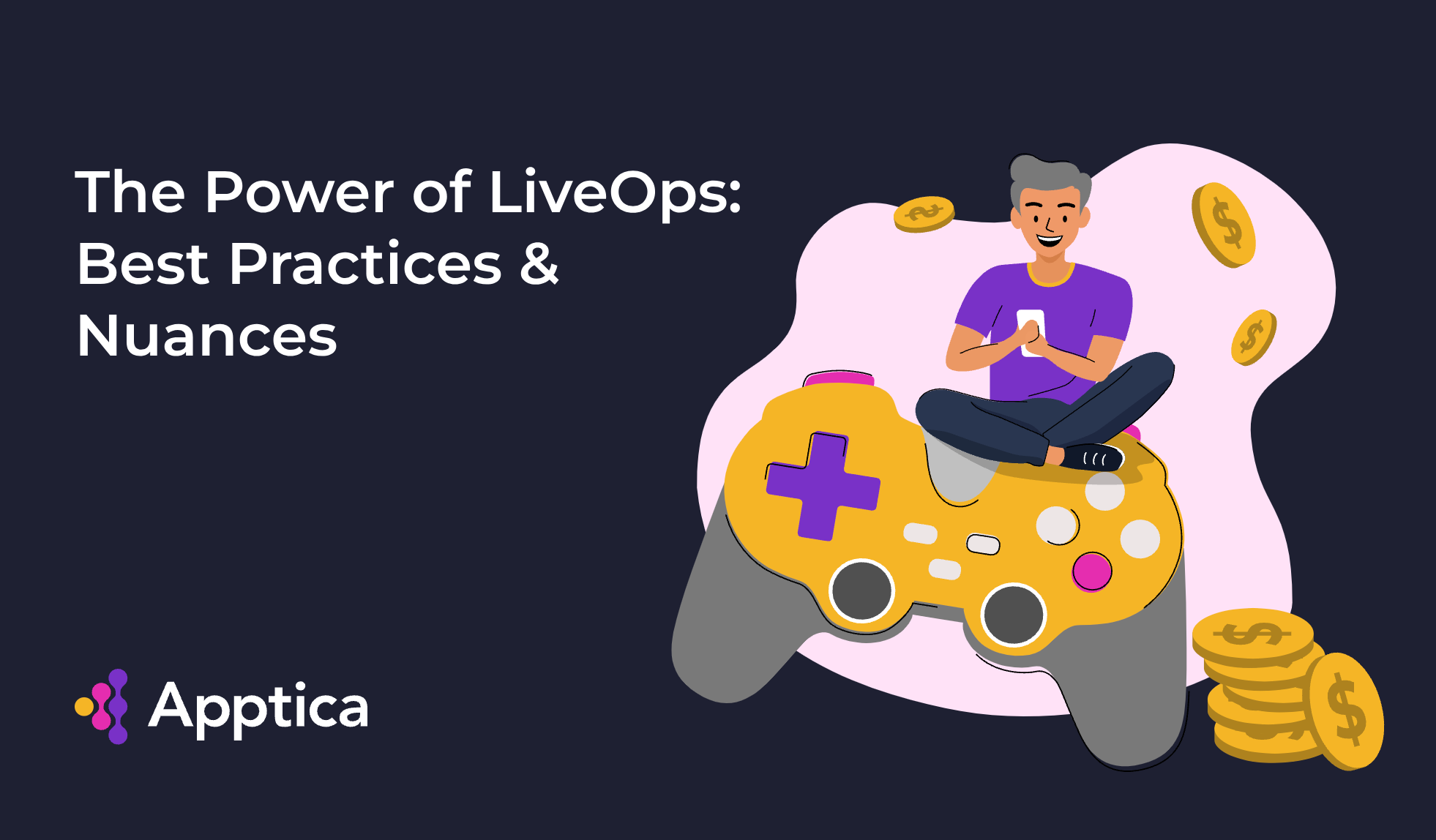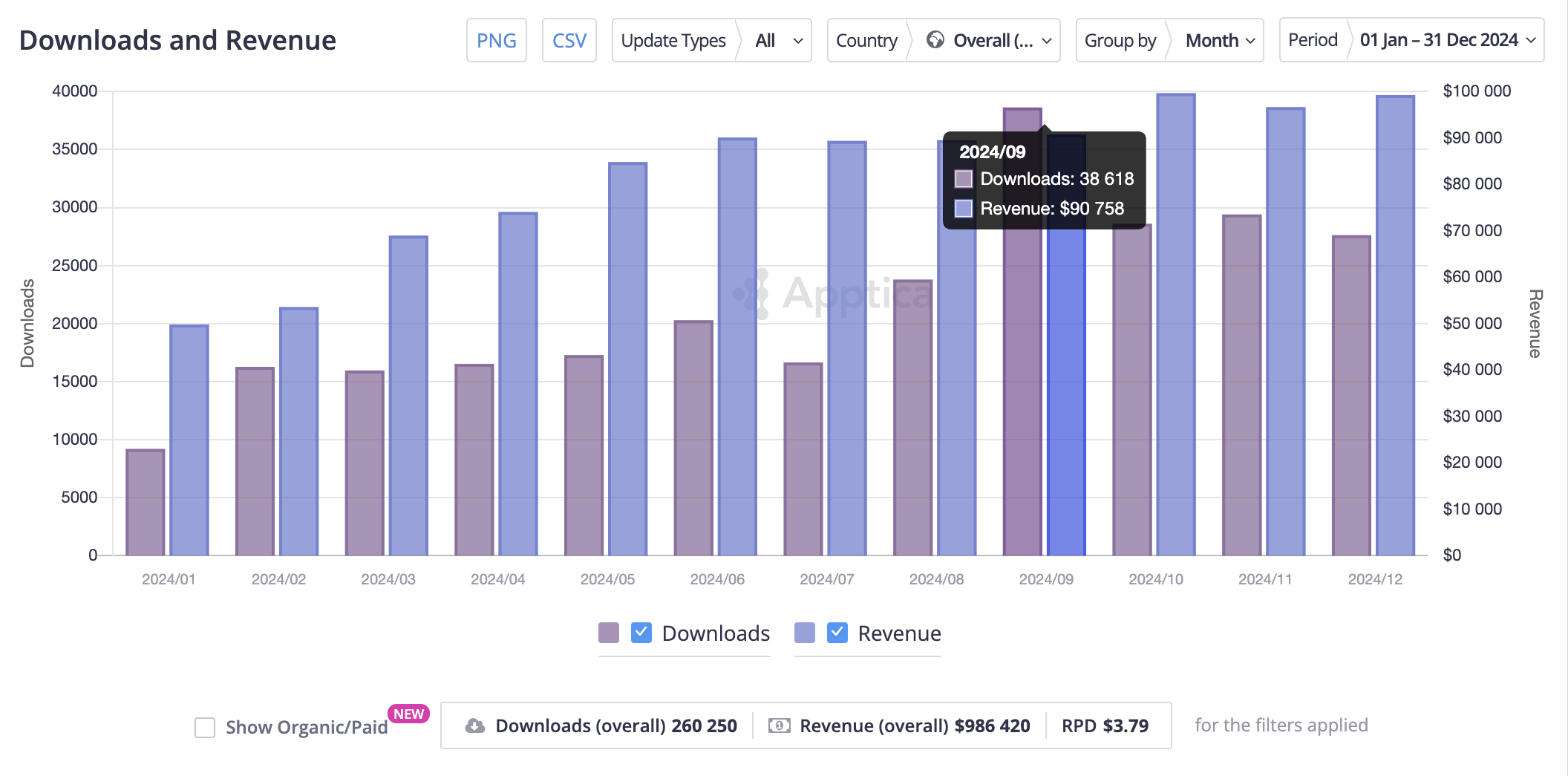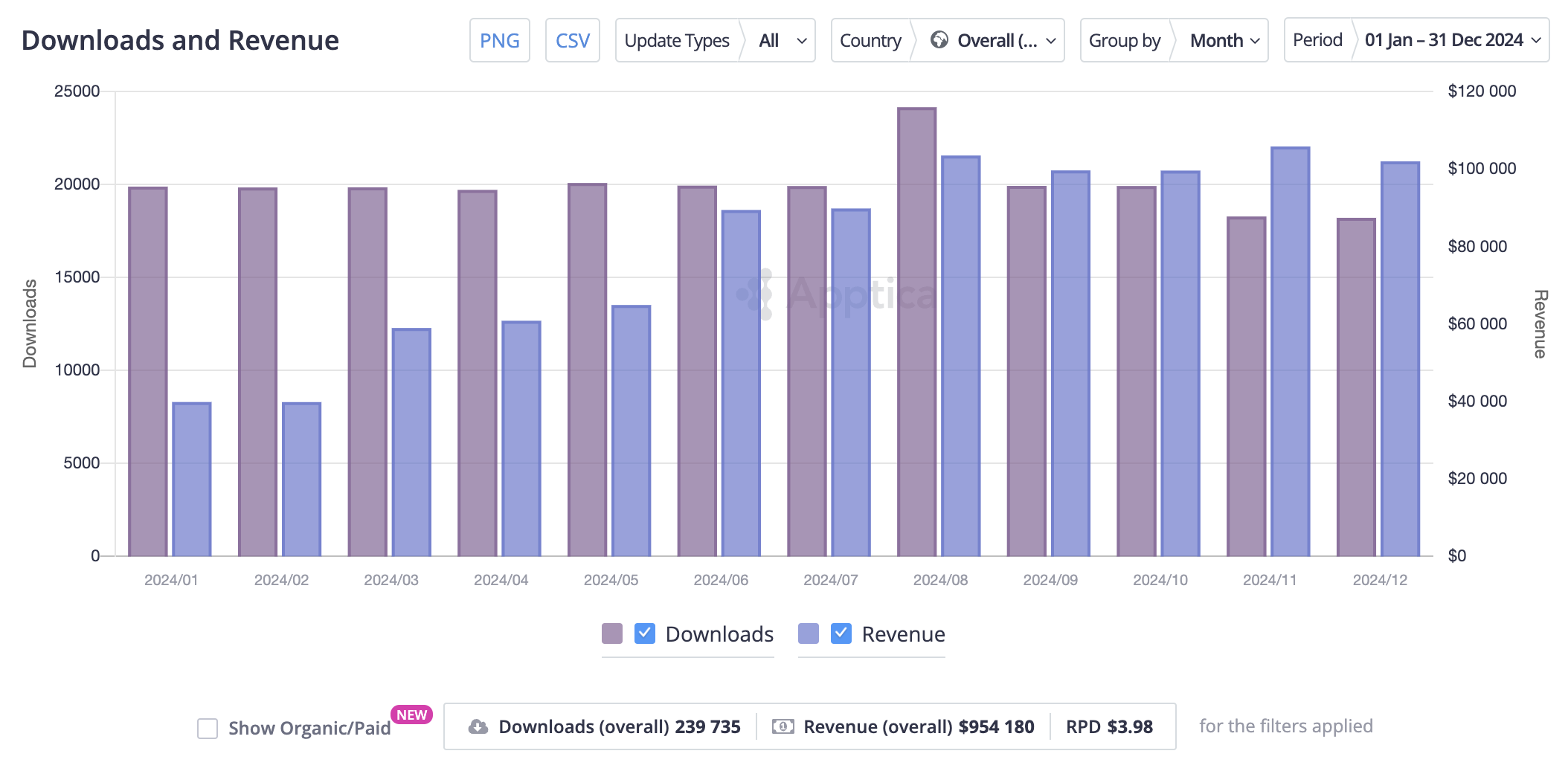The Best Mobile App Engagement Practices You Need to Know
Mobile app engagement is vital for retention and user lifetime value. With only 11.25% of apps used daily, marketers and developers must apply gamification, storytelling, onboarding, and personalization. Learn proven tactics to enhance UX, increase retention, and cut acquisition costs effectively.

Mobile app engagement determines how often users interact with an app. It is a crucial metric to keep high, in order to keep an app from oblivion.
An average person has 80 apps installed but interacts with only 9 daily and 30 monthly. That’s 11.25% and 37.5%, respectively.
Thus, you can increase mobile app engagement as either a marketer or an app developer to lower your acquisition cost and boost your value as a specialist. But what exactly should you do to improve your mobile app engagement metric?
App Engagement Explained
App engagement is a part of mobile analytics, indicating how well the users interact with the app. It is primarily responsible for retaining users, which is 5–25 times cheaper than user acquisition.
High mobile app user engagement implies the users keep on coming back to your app for more. This ensures improved customer lifetime value (LTV) and benefits organic traffic generation, marked by its quality.
At AdSkill, we adhere to the principle that providing a user-friendly interface, intuitive navigation, and reliable customer support is crucial for maintaining a high user LTV. These factors create a positive product experience that encourages clients to return repeatedly.
Another important aspect is the stability of the product: the absence of crashes and bugs enhances trust in the platform and reduces the likelihood of customer churn. Offering various bonuses and special incentives, such as discounts or additional features, serves as an added motivation for continued product use.
Moreover, the recurring users are likely to spread the positive word about the app, facilitating word-of-mouth. Do you know that 88% of people read online reviews to determine the quality of business? However, be careful as negative reviews can spread like a plague, making it harder to undo the infamy with app ads.
Finally, any level of engagement serves as a compass, indicating what your users want, and if they are satisfied.
Best Practices for Improving App Engagement
Our biggest recommendation is to use Apptica, one of the best analytics tools for mobile apps.
Join Apptica, an ad intelligence and app analytics tool, to access all the mobile app data analytics you need: from user acquisition to funnel analysis metrics.
Mobile app engagement consists of multiple sub-metrics. Focus on them to improve the main metric as a result.
Gamification
Via: Spinthewheel
Game-like features help to engage the users from the get-go. Not all the apps are games, but you can gamify them nonetheless. Consider adding features like progress badges, leaderboards, challenges, and spin-the-wheels. Gamification goes beyond games and includes fitness, educational, and food apps.
A notable example of gamification is Playrix, which built a second-layer management game on top of the basic match-3 game — Gardenscapes. The owners were also quick to incorporate LiveOps, a practice of modifying the game, based on the feedback received.

Storytelling
Faceless brands fail to inspire trust. That’s why sharing your app mission and vision is crucial to make your brand more relatable. Storytelling is especially important for Gen Z, who tend to be picky, when it comes to choosing just the right app.
A good story arc includes five elements:
- Hero, telling the story
- Challenge, which is to be solved
- Guide, pointing toward the solution
- Answer, a remedy to the challenge
- Result, where the hero reflects on their journey
Common mistakes include jumping from hero to result, which won’t work, since the users won’t have enough time to grow attached. Don’t forget to add visuals to facilitate the user’s affection, but make sure not to overdo it with the pictures and videos. Moreover, storytelling can be gamified, e.g., by encouraging people to participate in mobile app advertising; once a certain number of registrations is achieved, you can reveal the next piece of the story.
Onboarding Simplified
Users have a plethora of apps to choose from, which is why we have to adapt and cater to their needs precisely. Onboarding is a threefold process: registering an account, educating the user about the benefits, and providing a personalized experience (as long as the user consents). Proper mobile app onboarding ensures the user remains loyal instead of bouncing off.
For the app performance to soar, onboarding is to be succinct yet flexible enough. First, define your target audience and establish your core KPI, like completion, engagement, retention, or free trial conversion rate. Overall engagement is a continuous process, and your onboarding goals might differ slightly, depending on the nature of your app. For instance, a budgeting app is bound to appeal to a wider audience than a traveling one, leading to a higher Daily Acquired Users (DAU).
Second, ensure every element of the landing page adds value to the user experience (UX) and serves a purpose. Complement it with a progress bar or checklist to help the user navigate during onboarding. Also, it’s a good idea to make the intro skippable, in case of a gaming app, but with an option to turn it back on if needed.
Third, when asking for permissions, try to point out the advantages of doing so. Thus, users will know what they are getting into and will be less reluctant. User privacy is becoming mainstream, and by heeding this calling, you demonstrate respect toward the user.
As for the registration timing, this depends on your audience's character. Some people like to get as much info as possible, especially in the case of a banking app. However, when dealing with relatively low-ticket products, it’s better to simplify the registration as much as you can to lower your churn rate. But it doesn’t mean you should put a sign-up window ASAP — take your time and let the user experience the value of your app firsthand.
Highlight Underused Features
Some features might be too specific or complex, requiring extra effort to point out their value. Consider adding tooltips for complicated but useful features. You can also make dedicated spotlights for the features you feel like promoting. Remember, just because the feature is underused doesn’t render it bad. However, it might require additional in-app advertising for the users to recognize its value.
Via: Apple
When accentuating the features, make sure to focus on the benefits users receive or at least draw attention to the most important details. Avoid informational overload to ensure users have a good time while exploring your underdog. For example, make the page scannable, i.e., bring forward all the essentials and leave the details for the upcoming sentences.
Also, you don’t have to limit yourself to copies only, consider utilizing user-generated videos to kill two birds with a single stone: add social proof and visualize the information.
In-App Community
A dedicated social hub improves users’ engagement by nudging them to invest their time and effort into the app. Forums and the aforementioned leaderboards help people to express themselves and prove their worth to the world. Even if it’s just a tiny community of enthusiasts, people can’t help but compete for the place under the sun.
Having an app community helps your app advertisements too, thanks to word-of-mouth. People are more likely to spread the positive word about your product, while having a good time. Their peers are more likely to listen, since they belong to the same social group, unlike a large company.
Referral and Loyalty Programs
Monetary rewards for promoting an app via referrals are a powerful engagement booster. The referral program aligns your goals with the audience: to make a profit. This gives users a genuine incentive to spread the word about your app.
Via: MSI
Similar to gamification, you can implement a tier-based loyalty program, granting the most engaged users extra perks, e.g., bigger discounts on their next purchases. Whatever the program is, it creates an extra incentive to get involved with your app. And once the user is engaged, they won’t get off the hook so easily, as they’ve already made some form of commitment, which is not to be given up on so easily.
To attract and retain clients in the mobile app space, AdSkill has introduced a range of client-focused benefits designed to enhance satisfaction and trust. We are committed to boosting customer LTV by fostering long-term relationships that add value for both app developers and general clients alike.
Our referral program rewards clients for recommending our services, while select channels offer reduced commission rates— even down to 0% — to make our services more accessible.
We also prioritize top-tier customer support, with our team ready to resolve issues quickly, creating a seamless experience that reinforces trust.
Leverage Chatbots
The power of Artificial Intelligence (AI) in mobile is not to be underestimated. AI helps to serve customer complaints faster. Moreover, it streamlines trivial tasks, allowing the support team to focus more resources on tackling complex issues.
Via: AI Dungeon
But chatbots go beyond support conversations, a whole app can be based on a generative AI, e.g., AI Dungeon. This empowers the users to write their own stories and create unique characters, to which they can relate.


Make Use of Empty Spaces
Whether it’s a 404 page or a genuine empty space in an app, you gotta make use of it to stand out of the crowd. A trivial way to improve the quality of your empty spaces is to add internal links to other recommended pages. In case of a website, like F.A.Q., it helps to boost organic traffic and re-engage the otherwise bounced users.
Consider adding chatbots for empty spaces, so that users at least enjoy their staying on a dead-end page.
If the users log into their dashboard for the first time, consider incorporating an optional tutorial. This solves the problem of lack of visual elements and guides the users at the same time. Considering the space constraints, every item serving a double purpose is a gold vein.
Speaking of gold veins, register on Apptica, and use our in-depth mobile analytics to discover ways to improve your app performance and/or digital ads.
Personalization and Testing
So many words have been said about the importance of A/B testing, but this article would not be complete without a reminder. Split-testing is essential for finding weak spots that can be improved. For example, your users might prefer more information on an app landing page, instead of being very succinct and direct.
Remember us saying about knowing your audience? This is important for delivering personalized content. Nowadays, people have a bunch of alternatives to choose from, so your app should personalize UX to appeal to users more.
While regular updates are crucial to indicate that your app is alive, you need to know which updates your users need the most. That’s where A/B testing saves the day. Additionally, consider creating polls on social media, asking what would users like to see the most in your app.
But take the poll’s feedback with a grain of salt, since few users have actually been in app development and might want things they won’t like themselves. Customer feedback is good at indicating problems, but it’s suboptimal when it comes to picking a solution.
Database Collection
Collect your database of users, for customized special offers. It is helpful for upsells and annual events, so you know which users are more likely to engage with your digital ads. Once again, a dedicated database of users helps to personalize your app advertisement, ensuring the users receive only relevant and useful promotions.
Conclusion
Mobile app engagement is a critical metric for app success. It helps to keep users returning to the app regularly, which ultimately enhances customer lifetime value and organic traffic generation.
Key practices include gamification, storytelling, simplified onboarding, highlighting underused features, building in-app communities, implementing referral & loyalty programs, leveraging chatbots, optimizing empty spaces, and personalization through A/B testing & database collection.
By employing these strategies, app developers and marketers can enhance user engagement, reduce acquisition costs, and create a more valuable user experience, ultimately leading to greater app success and longevity.
And if you need any help with app analytics, contact us: marketing@apptica.com. Apptica brings your mobile app advertising one step closer to success.






